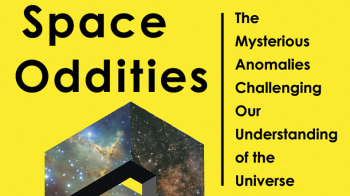Elementary Particle Physics: An Intuitive Introduction, By Andrew Larkoski, Cambridge University Press

This elementary textbook, suitable for either advanced undergraduate or introductory postgraduate courses, is a gem. Its author, Andrew Larkoski, is a phenomenologist with expertise in QCD, and a visiting professor at Reed College. It is worth mentioning that Reed College is also home to David J. Griffiths, who is the author of several successful textbooks, including his well-known “Introduction to Elementary Particles” (Wiley, 2nd edition, 2008). Larkoski’s book has a similar scope to Griffiths’ and certainly lives up to its legacy.

Larkoski begins with an introduction to special relativity and the standard preliminaries to particle physics, such as the Dirac equation, Fermi’s Golden rule and a very accessible introduction to group theory. The book also features a superb 30-page chapter on experimental concepts and statistics — an excellent resource for any student starting a particle-physics project for the first time. The main menu follows: matrix element and cross-sections calculations for QED, QCD and weak interactions. The book includes a nice introduction to electroweak unification, the basics of flavour physics, neutrino oscillations, and an accessible discussion on parton evolution and jets. The latter will be particularly useful for students of LHC physics. The book closes with an insightful chapter on open problems in particle physics.
A very nice collection of unsolved exercises will serve as an invaluable resource for lecturers. Many refer to processes currently being studied at the LHC and other projects. The book’s modernity is also evident through mentions throughout the text on the latest results in dark matter and neutrino physics, and a discussion on how the Higgs boson discovery was made.
Analogies are drawn between Feynman diagrams and electrical circuits
A particularly attractive feature of Larkoski’s writing is his use of intuitive and conceptual discussions: dimensional analysis is used often in calculations to get an idea of what we expect; analogies are drawn between Feynman diagrams and electrical circuits; connections between space curvature and quantum chromodynamics are pointed out, just to mention some of the very many examples you can find in the book.
One point that the lecturers should be aware of is that Larkoski employs the Weyl basis of Dirac γ-matrices, whereas Griffiths, Thomson (Modern Particle Physics, Cambridge, 2013), Halzen & Martin (Quarks and Leptons, Wiley, 1984), and other popular textbooks which currently form the backbone of many university courses, use the Dirac basis. As a result, both equations and Feynman rules look different, and care will be required when multiple textbooks are used in the same course. In general, Larkoski is closer to Thomson and Griffiths, as it does not include the wide range of calculations of Halzen & Martin, which is slightly more advanced.
Larkoski’s new book will certainly find its way among the most popular particle physics textbooks. Its clear and intuitive presentation will doubtlessly deepen the understanding of students who read it, and inspire lecturers to a more conceptual approach to teaching.








